Michigan vegetable crop report – June 4, 2025
Warm-season crops were hating life this last week, but here comes the sun.

Weather
The past week saw hazy skies aloft as weather patterns transported wildfire smoke from Canada our way. Extended dry conditions in Canada have exacerbated wildfires, but nothing like the smoke from a couple years ago.
Dry soils, clear skies and calm air led to scattered frosts Saturday night into Sunday morning in west Michigan with some minor crop damage reported.
Most of Michigan was 4-8 degrees Fahrenheit below normal for the Lower Peninsula with closer to normal temperatures north. Rainfall totals ranged from nothing to 0.75 inches in the western and northern lower regions. Overall, it has been cooler and drier than normal.
Degree day totals are now a few days behind normal in the northern lower and central upper regions, with close to normal totals in the southern lower.
Recent winds high in the sky have been coming from the south, creating conditions conducive to transport of migratory pests from southern climes.
This week’s forecast calls for occasional showers and thunderstorm likely Wednesday in the north, west lower and east upper Michigan, then slowly spreading south and east into central and southeast lower Michigan by this evening and through tomorrow morning. A few strong storms possible in the southeast. Prior to the rainfall, mostly fair, windy and very warm Wednesday in southeast lower Michigan. Showers possible again to the north Friday. Mostly fair and cooler statewide Saturday. Rain possible again statewide late Sunday and Monday.
High temperatures from the upper 60s north to mid-80s south Wednesday, cooling to the 70s Thursday through this weekend. Lows from the upper 40s north to upper 50s south Thursday falling to the upper 40s and low 50s Friday through this weekend.
Medium range outlooks call for a progressive pattern with temperatures gradually warming back to near to above normal levels with normal to above normal precipitation totals through mid-June.
On-farm soil moisture monitoring research opportunity
Michigan State University (MSU) researchers are looking for 10 farms to install soil moisture probes in up to two fields. Cooperators get access to real-time data for both monitoring stations for three growing seasons (fall 2025-fall 2028). Refer to the flyer for more details.
Reach out to Alex Kuhl at kuhlalex@msu.edu if you might be interested or have questions.
Plinazolin
Syngenta is seeking Environmental Protection Agency (EPA) approval for a new insecticide, Plinazolin, which controls pests by contact and ingestion. As an IRAC Group 30 product, it offers a new mode of action for vegetables and supports insecticide resistance management. It’s effective against many vegetable pests. During the EPA registration process, the public can submit comments. These comments help shape final regulations and are most effective when they explain how the rule would impact specific situations. Expressing your opinion through detailed, relevant input is welcome. The comment period ends June 10, 2025. Learn more and submit your comment here.
Field bindweed biology and management
Field bindweed (Convolvulus arvensis) is a perennial weed that is beginning to cause headaches in many vegetable crops. Once established, it can produce persistent root systems to a 15-foot depth or more and can resprout from roots or rhizomes throughout the summer. It can also reproduce by seeds that may last 50 years or more in the soil. Therefore, prevention is a key part to management. Of course that is easier said than done. Once established, management is challenging, but tillage, cover crops and herbicides can help. Effective use of these approaches depends on basic knowledge of bindweed biology, which helps determine the optimal timing and frequency of control practices.
Established stands of field bindweed usually begin sprouting from storage roots in May and deplete their storage reserves for several weeks before developing enough leaves to replenish those reserves. Therefore, killing the plant when it reaches this critical stage (known in plant biology lingo as the compensation point) helps drain root reserves. For field bindweed, this transition point usually occurs when plants have about 4-6 leaves. Tillage to about 4 inches depth at this stage can effectively kill shoots and stimulate dormant buds to sprout, triggering a second flush that further depletes reserves.
Repeating tillage (or applying herbicides) every two to three weeks (whenever plants reach four leaves) will eventually drain the root system, but may not be practical. If fields are removed from cash crop production, two to three cycles of tillage, followed by a thick cover crop (e.g., sorghum sudangrass at 50 pounds per acre) may shade weakened bindweed sprouts sufficiently to deplete reserves without additional tillage. However, roughly 10% of below ground buds typically remain dormant during the summer, so this approach will not completely eliminate the problem.
A more practical approach for many growers involves using systemic herbicides. Systemic herbicides that translocate to roots have the greatest potential to provide long-term suppression. Among these, auxin mimics (e.g., quinclorac, 2,4-D or picloram) are among the most effective (glyphosate less so). Asparagus growers report effective use of quinclorac for bindweed control after harvest. In contrast to tillage, the optimal timing for application of these products is a few weeks after the compensation point is reached (more than the 4-6 leaf stage), when plants will be actively translocating herbicides to their roots as they replenish root carbohydrate reserves.
It is also important to note that the most effective movement of herbicides to roots occurs when plants are healthy and growing actively. When bindweed is stressed (e.g., drought or tillage disturbance) it will not be well controlled by these products.
For more information on field bindweed biology and control, here are a couple good resources:
- Management options for control of field bindweed: Some practical guidance for chemical control from Kansas State University.
- Manage Weeds On Your Farm: Bindweeds Free PDF of excellent book from the Sustainable Agriculture Research and Education (SARE) that provides useful information on the biology of many weeds, including bindweed, and suggestions for non-chemical management.
- Field bindweed (Convolvulus arvensis): “all tied up”: A deeper dive into bindweed biology, history and control.
Crop updates
Asparagus
Purple spot is a yearly problem for Michigan growers and affects all stages of production. At this time of year, rain events trigger a release of the ascospores that overwintered on last year’s fern debris on the soil surface. These ascospores can infect all aboveground plant parts including the spears for harvesting and the fern of young plantings. Blowing soil can cause small, microscopic wounds that provide an easy entry point for the purple spot fungus. Protecting the young asparagus plantings that are not being harvested this year or had a reduced number of pickings are at risk of purple spot infection. This disease will be hard to stop if the pathogen becomes established early in the growing season. Premature browning of the fern severely disadvantages the crown’s reserves and can hurt subsequent spear yield.
Fungicide recommendations for protecting the fern of young asparagus plantings. Based on fungicide trials conducted in cooperation with a commercial Michigan grower, protecting the fern with an application of Quadris (azoxystrobin) is recommended. Quadris was highly effective in our field trials and is also locally systemic within the plant. If purple spot disease is already established in the young field, combining Quadris with chlorothalonil (Bravo WeatherStik is an example) as a tank mix may be helpful. After the initial fungicide application, follow up with additional sprays every 7 days to ensure coverage of the new, emerging fern and continuous protection. The fungicides that are registered for use on asparagus fern include azoxystrobin, chlorothalonil and mancozeb. Chlorothalonil and mancozeb are protectant fungicides and need to be applied prior to the purple spot spores landing on the plant’s surface in order to prevent infection.
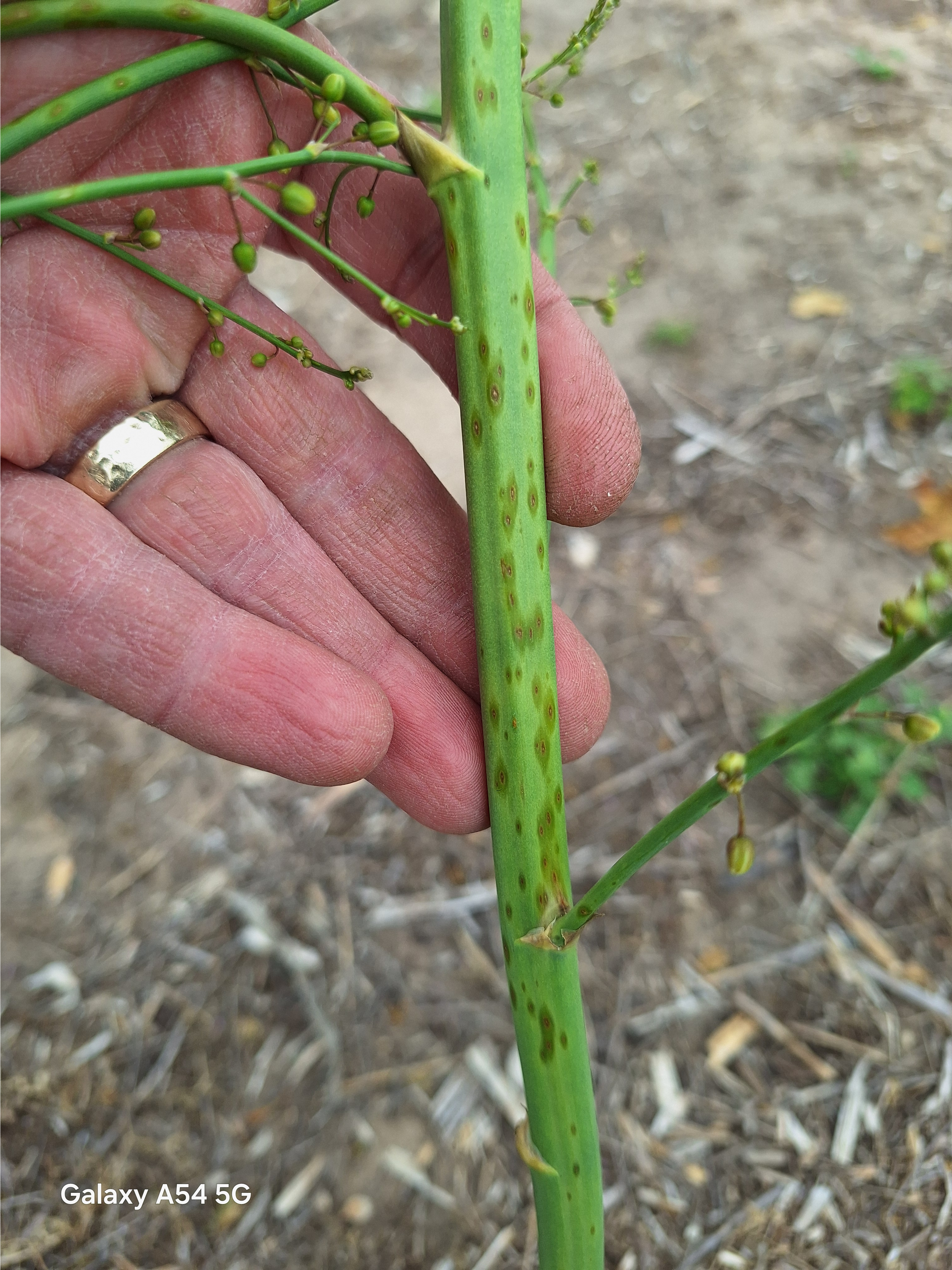
Brassicas and greens
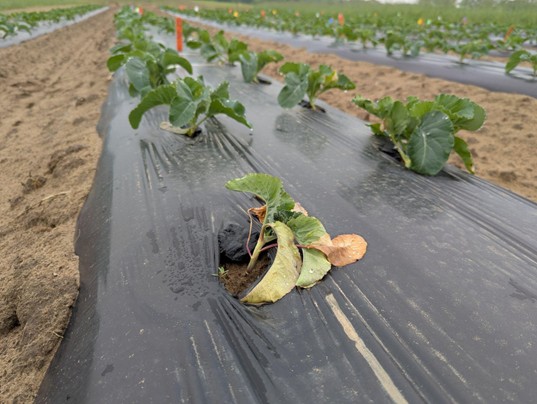
Cabbage maggots from the spring generation have been causing damage across the state, supported by the cool, wet conditions. Verimark can be an effective control but is most effective as a transplant tray drench. This approach gets a concentrated solution right to the roots. To maximize chances for success, read the label for instructions, do not reduce the rate, and apply it to the transplant tray. Check out these publications from Cornell for more information:
- Cabbage Maggot Control in Brassicas, 2024
- Cornell “Cheat Sheet” for Insecticide Options for Cabbage Maggot in Brassicas in New York, 2024

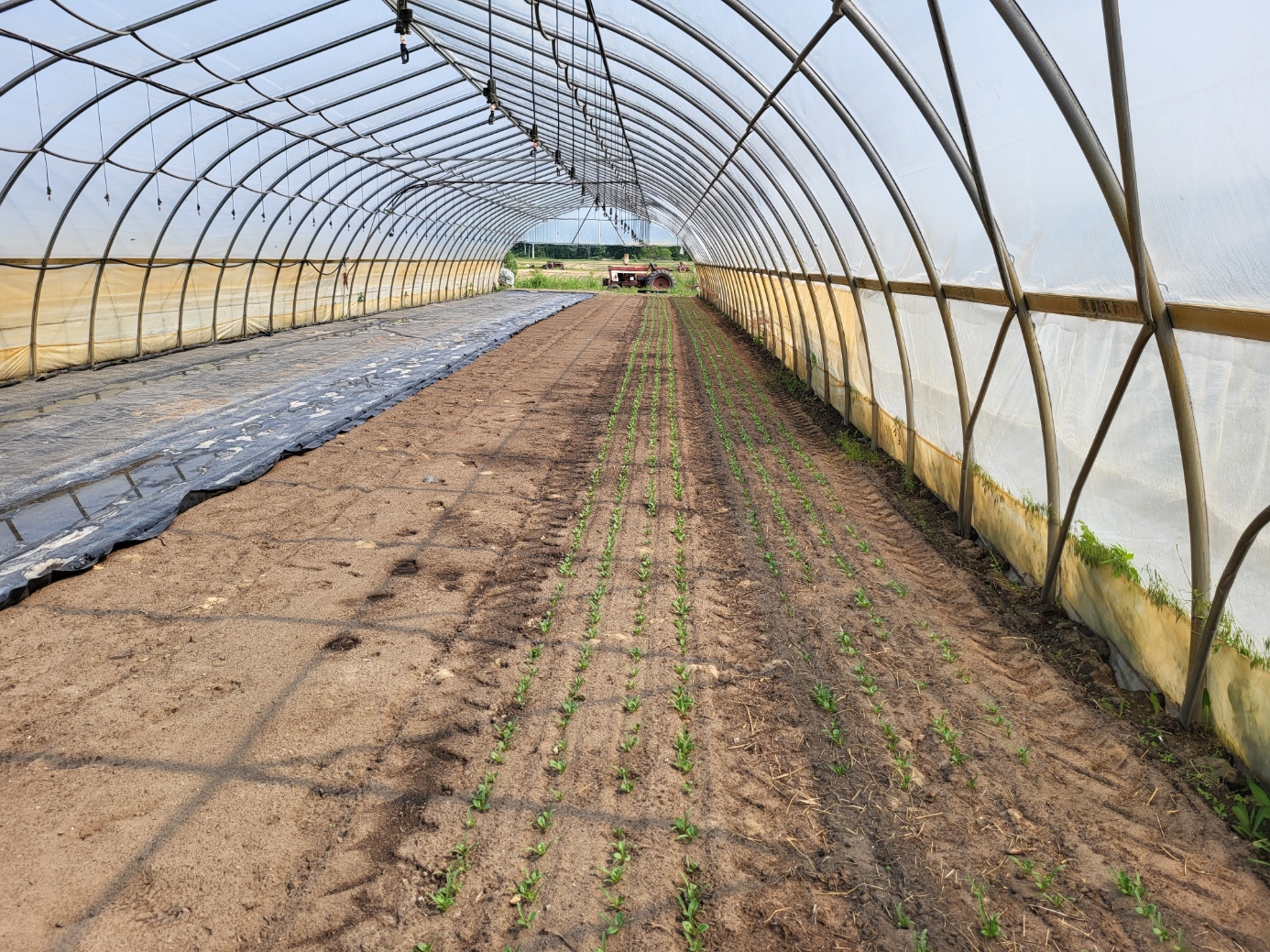
Cucurbits
Cucumbers, summer squash and melons are still being transplanted/seeded outside. Pumpkins are being planted now. Some foliar diseases in hoophouse cucumbers have been reported.
Fruiting vegetables
Tomatoes, eggplant, okra, and peppers are being planted outside. Plants have been looking sickly and miserable after the big rain from last week, the cool down, near freezing temperatures, and wind, wind, wind. Fertilizer applications to the soil as preplant or drip during this period were likely underutilized by plants, but as we warm up in the next week they will grab it.
The same conditions have made for challenges maintaining fruitful temperatures in hoophouses as well. More than one grower remarked this week that they couldn’t remember the last time they had run their heaters in June. High tunnel tomatoes are starting to be harvested. Blossom end rot has been seen on green fruit. Cutworm damage in peppers has been reported. Pyrethroid insecticides can be applied to manage cutworms.
Botrytis has been reported on tomatoes growing in the greenhouse. Botrytis is a fungal pathogen with a broad host range. To avoid Botrytis on greenhouse crops, it is important to minimize the duration of leaf wetness and reduce the relative humidity to less than 85%. Increasing ventilation and air movement are key management strategies. Since Botrytis produces prolific spores that are moved on air currents, removing infected plant tissue with the “gray mold” from the growing environment can be helpful.
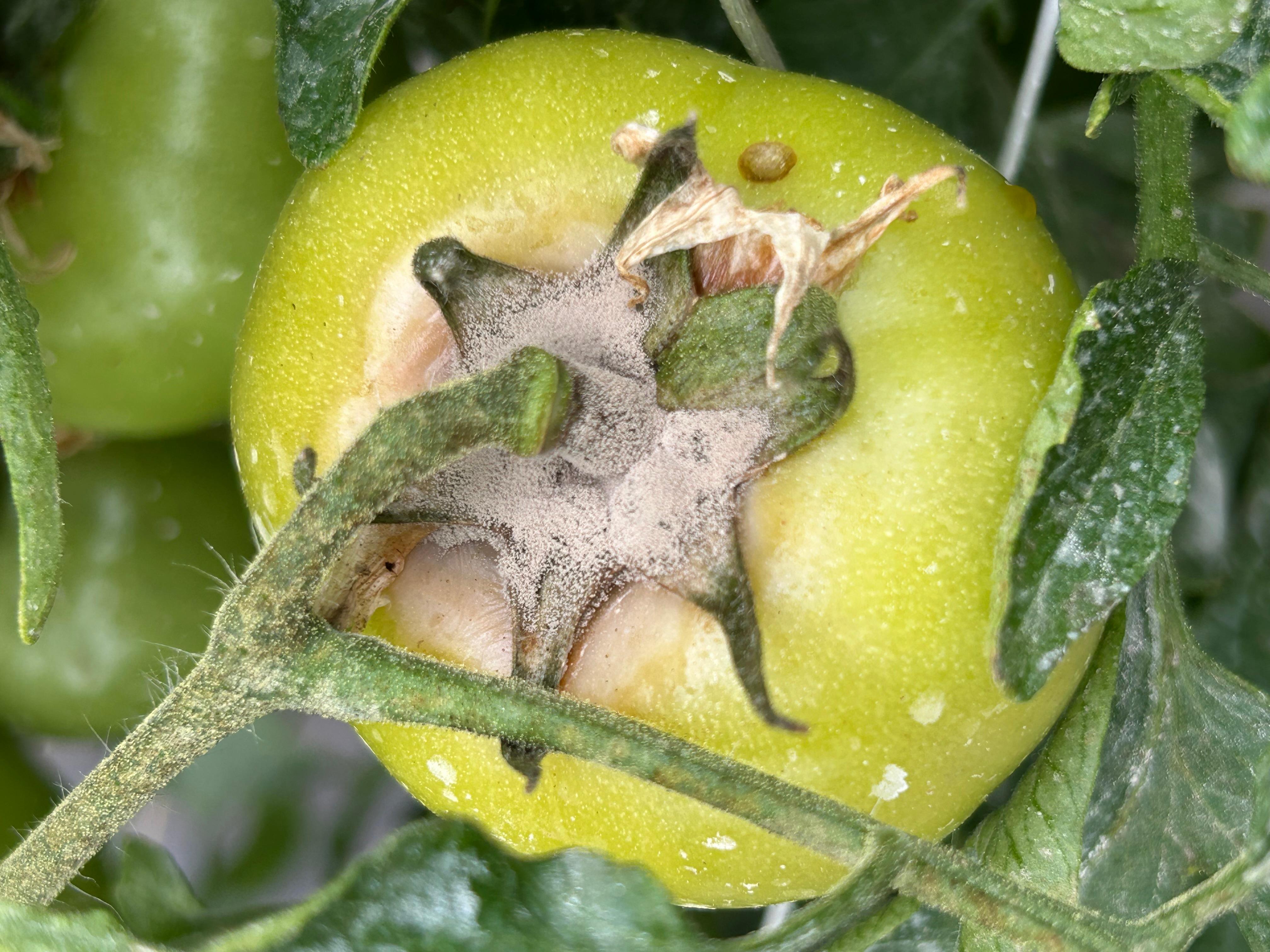
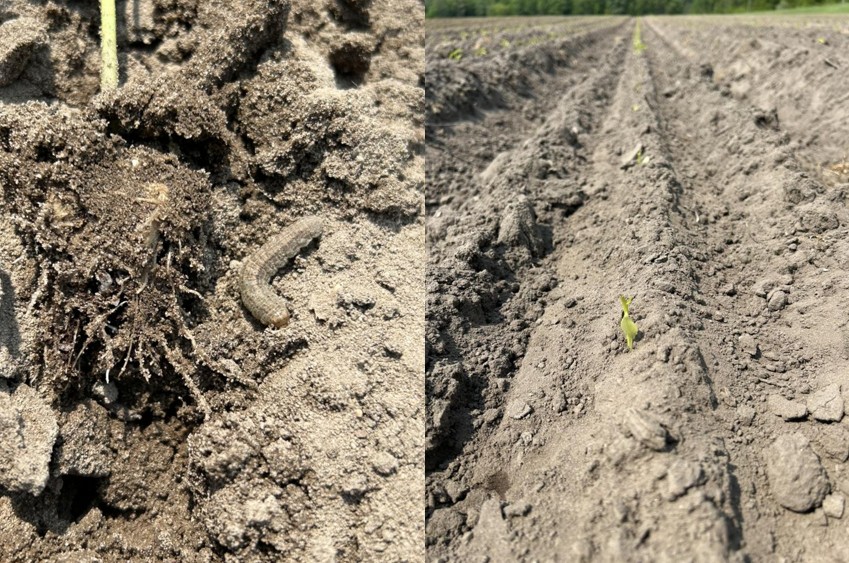
Onions and garlic
Leeks are being planted. Onions, garlic and shallots are all progressing nicely. Onion thrips are active in onion transplants, but they are below the application threshold in fields checked in east Michigan. In direct-seeded onions, thrips are not yet active. Insecticide application is unnecessary until thrips numbers reach the 0.5 1 thrips per leaf threshold. At that point, Movento should be applied.
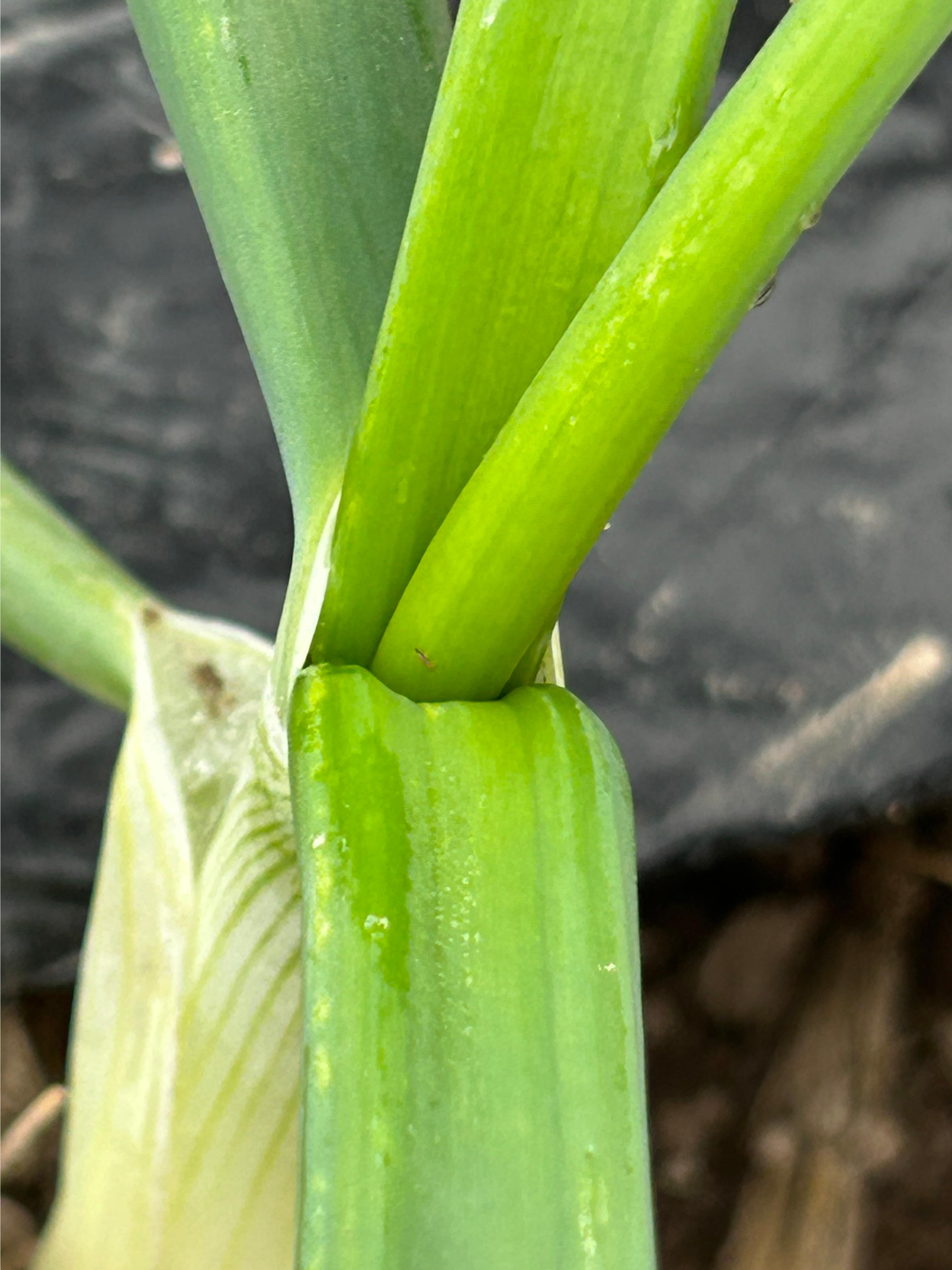
Carrots and celery
Testing of aster leafhoppers for phytoplasma has begun; three samples from various carrot and celery fields have been tested so far. Aster yellows phytoplasma was not detected in these samples. Testing will continue throughout the growing season, anyone interested can subscribe to receive the text alerts. More information is available here.
Recent south winds high in the atmosphere have created conditions that may transport leafhoppers from southern climes up to us.
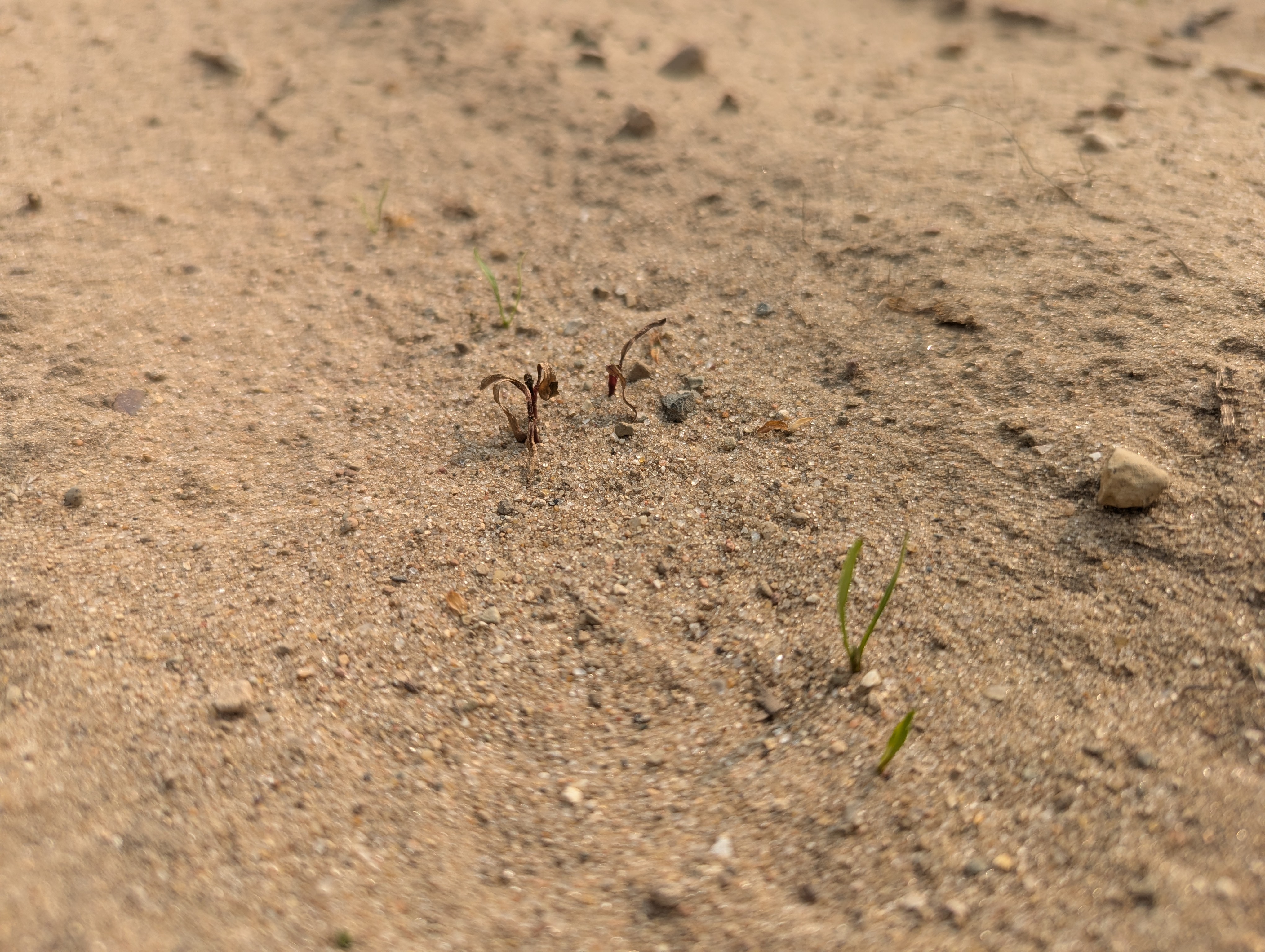
Sweet corn
Sweet corn successions are being continuously planted. Due to recent cold temperatures, sweet corn plants are showing stress and yellowing in the eastern part of the state, and freeze damage in parts of southwest and west central Michigan.
Root crops
Wireworm damage has been reported in root crops, including potatoes, sweet potatoes, and beets. Wireworms are the larval phase of click beetles that inhabit the soil and can cause damage by tunneling into plant roots. Undisturbed grassy areas can support wireworm populations, so when these areas are worked up for vegetable production wireworm pressure may be high. Cornell has done some research into the use of entomopathogenic nematodes as a biological control practice. Introducing the nematodes was shown to reduce wireworm damage in sweet potatoes, particularly when a mix of different nematode strains was used. Check out this slide deck from researchers at Cornell for more details on wireworm management.
The first radishes have been harvested in the eastern part of the state and harvest has been slow but ongoing in West Central. Sweet potato slips are being planted.
Produce Food Safety On-Farm Readiness Reviews
Schedule an On-Farm Readiness Review today for a two-hour educational visit that takes place during the harvest season and is meant to be casual and low stress. Everything discussed during an On-Farm Readiness Review is confidential and focuses on ways to reduce risks in relation to produce safety. There is no pressure to take our advice either, we are just here to support you in your produce safety efforts.
Events
- June 5, 5:30-8:30 p.m., Soil Health Workshop for Beginning Farmers
- June 5, 7-8 a.m., Field Crops Virtual Breakfast Series: Wheat Fungicide (RUP/CCA)
- June 5, 12 p.m., Monthly Drop-in Organic Farming Q & A - JUNE 2025
- June 6, 10 a.m.-3 p.m. Beginning Farmers "Train the Trainer" Workshop - Flint
- June 10, 10 a.m.-2 p.m., AgrAbility Farm Visit in Holland
- June 10, 1-5 p.m., Beginning Farmers "Train the Trainer" Virtual Workshop
- June 12, 5:30-8:30 p.m., Integrated Pest Management Workshop for Beginning Farmers
- June 12, 7-8 a.m. Field Crops Virtual Breakfast Series: Cercospora for Sugar Beets (RUP/CCA)
- June 17, 1-5 p.m. Beginning Farmers "Train the Trainer" Workshop - Chatham
- June 18, 8:30 a.m.-12 p.m., Scouting School 2025 (Day 2)
- June 19, 7-8 a.m., Field Crops Virtual Breakfast Series: Legacy Phosphorus: The Hidden Driver of Drainage Loss (CCA only)
- June 19, 5:30-8:30 p.m., Pollinator Workshop for Beginning Farmers
- June 26, 5:30-8:30 p.m., Farm Financial Management Workshop for Beginning Farmers
- July 16 - 8:30 a.m.-12 p.m., Scouting School 2025 (Day 3)
- July 30, Edible Flint Food Garden Tour
- August 5, 12-1 p.m., Seed Treatment Webinar Series
- August 12, 12-1 p.m., Seed Treatment Webinar Series
- August 18 – 19, Northern Michigan Small Farm Conference
- August 19, 12-1 p.m., Seed Treatment Webinar Series
- August 26, 12-1 p.m., Seed Treatment Webinar Series
This work is supported by the Crop Protection and Pest Management Program [grant no 2024-70006-43569] from the USDA National Institute of Food and Agriculture. Any opinions, findings, conclusions, or recommendations expressed in this publication are those of the author(s) and do not necessarily reflect the view of the U.S. Department of Agriculture.



 Print
Print Email
Email




